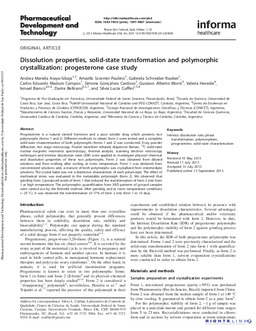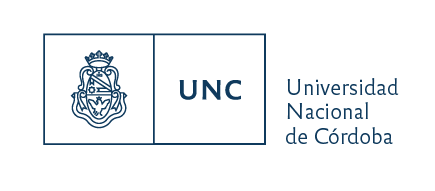Dissolution properties, solid-state transformation and polymorphic crystallization: progesterone case study

View/
Date
2014Author
Araya-Sibaja, Andrea Mariela
Paulino, Amarilis Scremin
Rauber, Gabriela Schneider
Maduro Campos, Carlos Eduardo
Cardoso, Simone Gonçalves
Monti, Gustavo Alberto
Heredia, Valeria
Bianco, Ismael Darío
Beltramo, Dante Miguel
Cuffini, Silvia Lucía
Metadata
Show full item recordAbstract
Progesterone is a natural steroid hormone and a poor soluble drug which presents two polymorphs (forms 1 and 2). Different methods to obtain form 2 were tested and a complete solid-state characterization of both polymorphs (forms 1 and 2) was conducted. X-ray powder diffraction, hot stage microscopy, Fourier transform infrared, dispersive Raman, 13C solid-state nuclear magnetic resonance spectroscopy, thermal analysis, scanning electron microscopy techniques and intrinsic dissolution rates (IDR) were applied to investigate physical?chemical and dissolution properties of these two polymorphs. Form 2 was obtained from diluted solutions and from melting after cooling at room temperature. Form 1 was obtained from concentrated solutions and, a mixture of both polymorphs was crystallized from intermediate solutions. The crystal habit was not a distinctive characteristic of each polymorph. The effect of mechanical stress was evaluated in the metastable polymorph (form 2). We observed that grinding form 2 produced seeds of form 1 that induced the transformation of form 2 into form 1 at high temperature. The polymorphic quantification from XRD patterns of ground samples were carried out by the Rietveld method. After grinding and at room temperature conditions (25 C), it was observed the transformation of 17% of form 2 into form 1 in 10 days.




